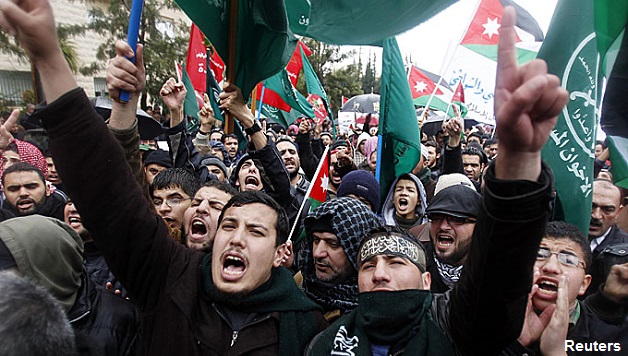On October 17, tens of thousands of workers and peasants rose up and removed Bolivian President Gonzalo Sanchez de Lozada from power. One hundred were killed in the streets before the president was forced to resign and flee the country for exile in Miami. Mr. Sanchez de Lozada, a millionaire mine owner and a willing puppet of the US-controlled World Bank and IMF, was known as one of the staunchest advocates of Washington’s free market economic policies in Latin America. In the most impoverished country in Latin America, capitalism’s failed policies were destined to set Bolivia on fire. Sanchez de Lozada simply provided the match.
Sanchez de Lozada enraged many Bolivians by cutting social programs, privatizing state industries, and eliminating jobs and pensions. The final blow was the government’s plan to construct a $5 billion pipeline to Chile and sell off natural gas reserves to energy-starved California and Europe, while nearly 3 million Bolivians have no electricity or drinking water. This, combined with a failed anti-drug policy, were the two most important factors leading to Sanchez de Lozada’s downfall.
In Bolivia, 5.6 million of the 8.5 million people live in poverty, and the poorest of the poor are peasants, predominantly members of the Aymara and Quechua ethnic groups. The indigenous peasantry accounts for half of Bolivia’s population. Life expectancy in some areas of the Andean countryside is under 45 years. Left without a safety net by the state, small farmers known as “cocaleros” turned to the cultivation of coca leaves for the international drug trade as the best chance for survival in Bolivia’s “free-market” economy.
When Sanchez de Lozada began to destroy the coca crop in accordance with Washington’s “war on drugs,” the indigenous peasants, deprived of the cash crop they came to depend on, organized a cocaleros’ union and ran their own presidential candidate, Evo Morales. Morales lost the 2002 election to Sanchez de Lozada by a slim margin in what was probably a stolen election, and now as congressman for the MAS (Movement Toward Socialism) party, he is a key opposition leader of the coca growers and indigenous poor.
Bolivia’s new president, Carlos Mesa, who was Sanchez de Lozada’s Vice President, is heading a weak interim government, and he knows it. Unless the cocaleros’ concerns are dealt with, he will be thrown out of power just as swiftly as Sanchez de Lozada. Just 24 hours after becoming president, Mesa acknowledged that changes in the policy towards coca cultivation must take place. Yet, how will Bolivian capitalism strike a middle course between the demands of the coca-growing peasants and Washington’s coca eradication policy? In nearby Peru, President Alejandro Toledo is wedged between the reemergence of guerilla groups, like the Shining Path, which derive funding from the thriving coca trade, on the one hand, and public pressure to reign in the violence of the army on the other. Under capitalism, there will be no way to break this chain of poverty and violence.
What Strategy for Victory?
Unfortunately, the leaders of the industrial action that brought down Sanchez de Lozada’s regime, namely the Bolivian trade union movement (COB), the United Trade Union of Rural Workers and Peasants of Bolivia (CSUTCB), and the MAS, have not put forward any coherent program to fight the Bolivian capitalists and the landlords. In fact, many of the leaders of the MAS, including Evo Morales, have a misguided view that the people must “give the new government a chance.” A chance to do what, exactly? To murder more protesters who oppose their austerity measures? Sanchez de Lozada may have fled the country, but the Bolivian ruling class still remains in power.
As the coup against Allende in Chile in 1973 demonstrated, the ruling class has no respect for democracy when it goes against the interests of capitalism. It is not sufficient to call a general strike and expect that the entire system of poverty and exploitation will disappear. The working class must move decisively to organize itself with a view to taking power – establishing strike committees in every workplace and community, nationalizing the natural resources and big business (Bolivian and international), and redistributing land to the peasants. If not, the ruling class will regroup, move to regain the upper hand, and suppress the workers’ movement through repression and terror.
The demands of this movement will never be realized unless Bolivian capitalism is abolished and a start is made toward the socialist transformation of society. Since Bolivia is a landlocked, impoverished country, this transformation could serve as the signal for the beginning of a revolutionary upheaval across Latin America. Given the hatred for neo-liberalism and globalization across the region, there is little doubt that a decisive move by the workers and peasants of Bolivia to take power into their own hands would receive huge support from working people, from Argentina to Mexico and into the United States as well.


